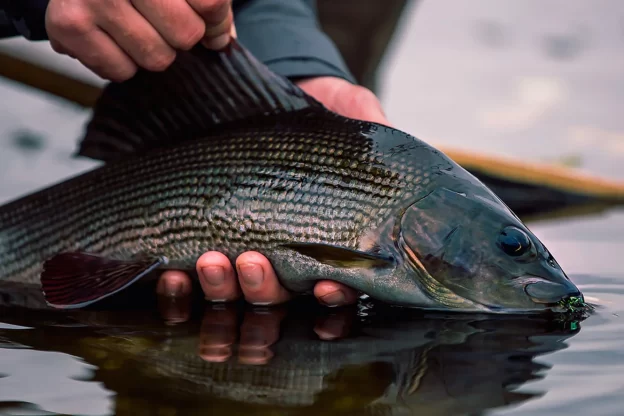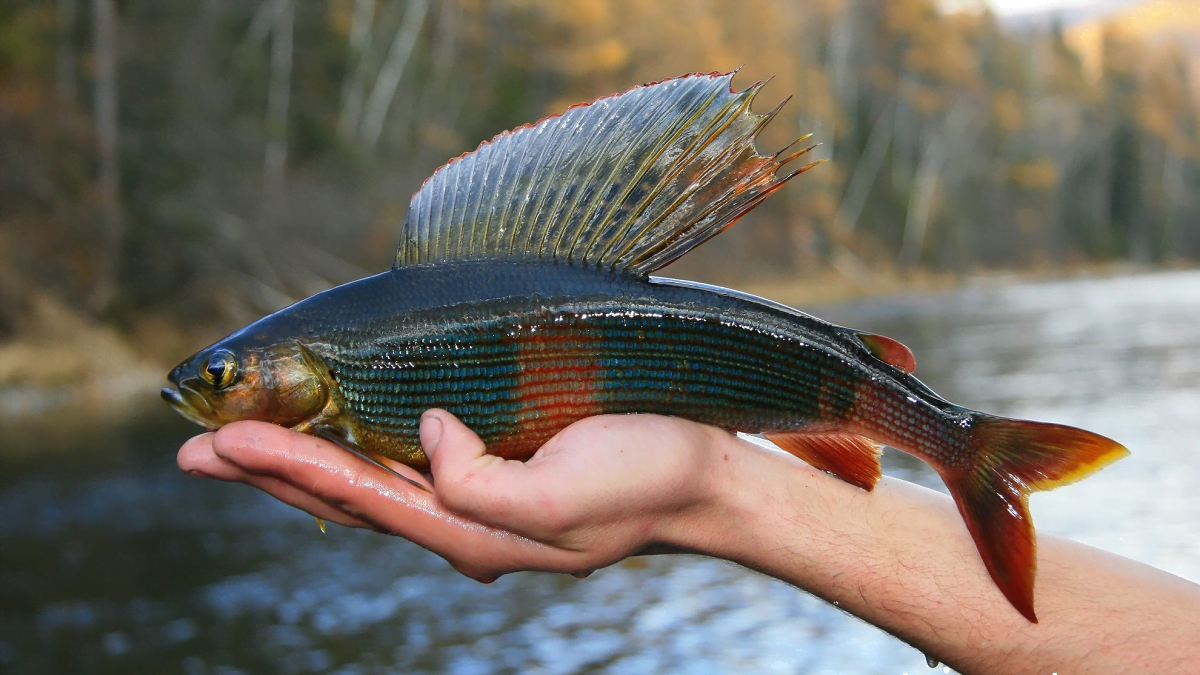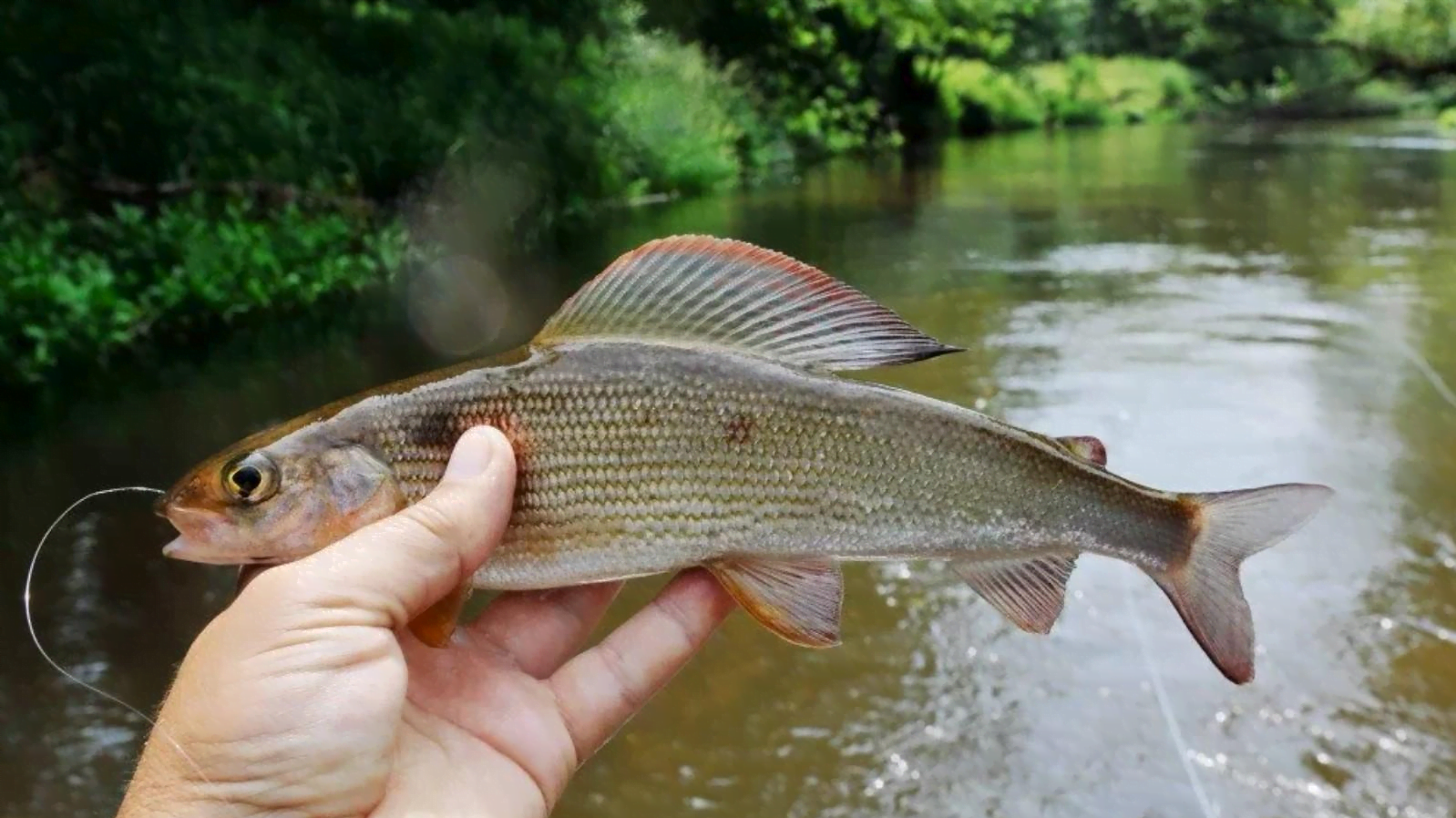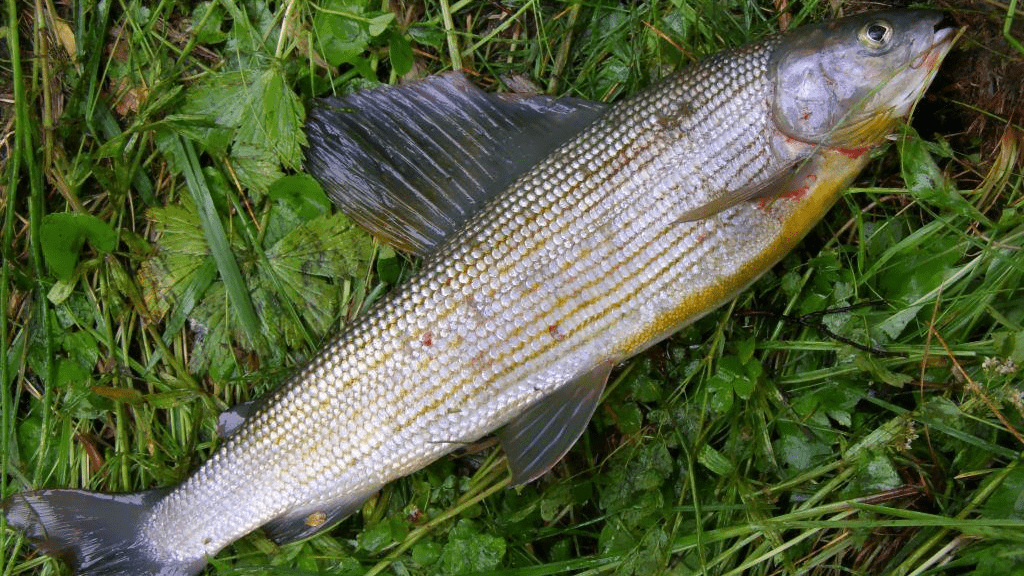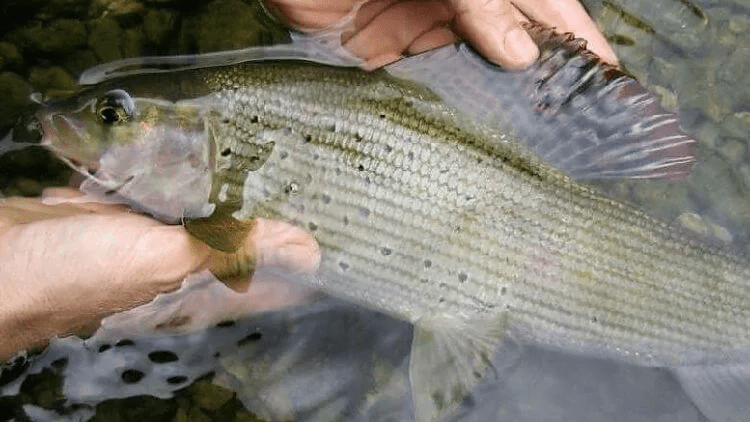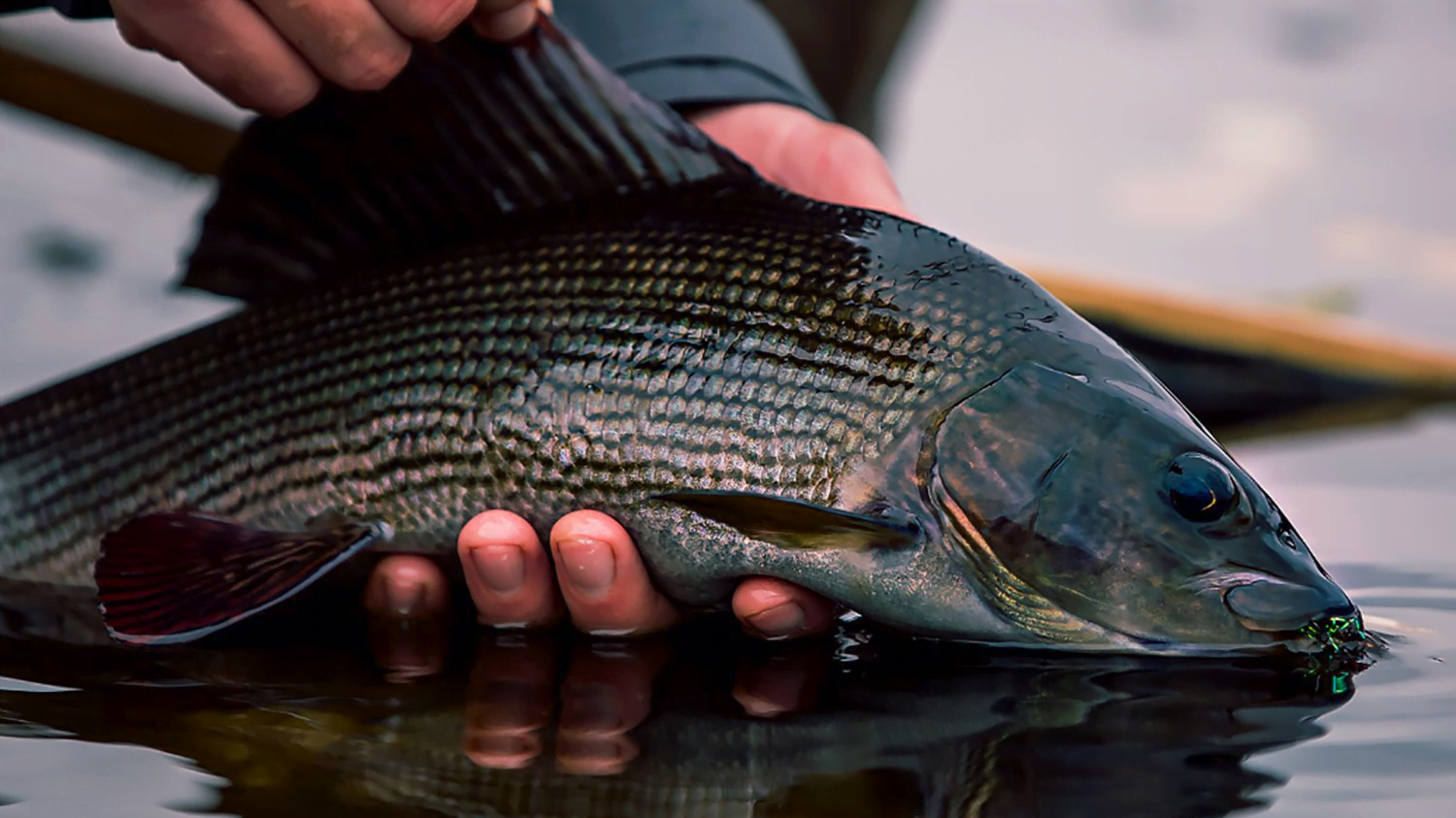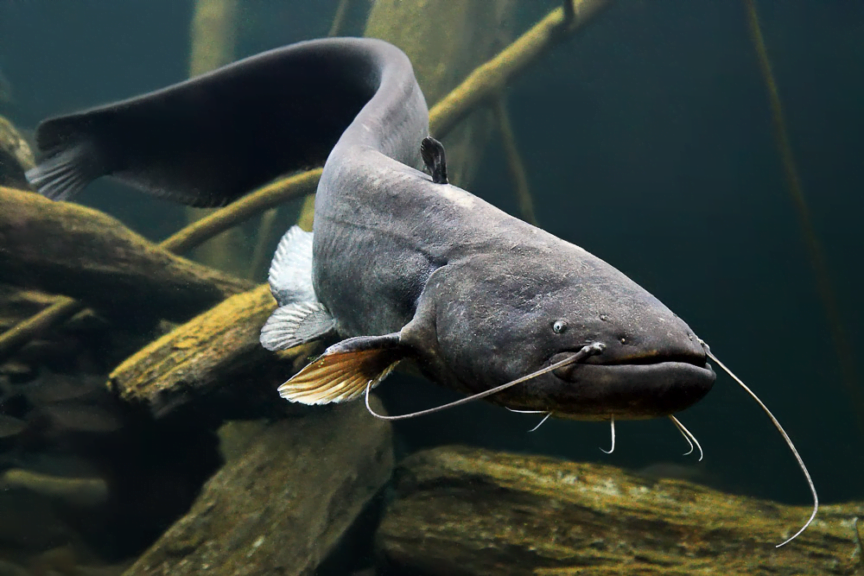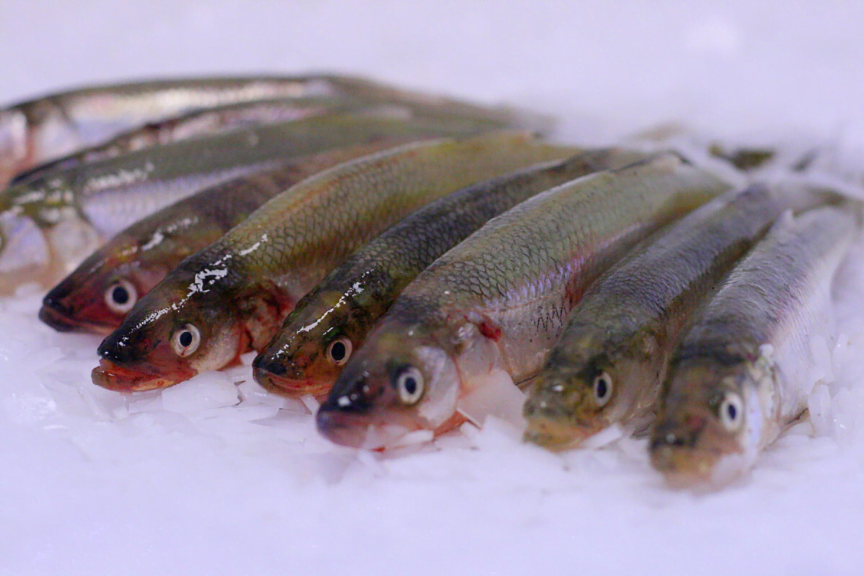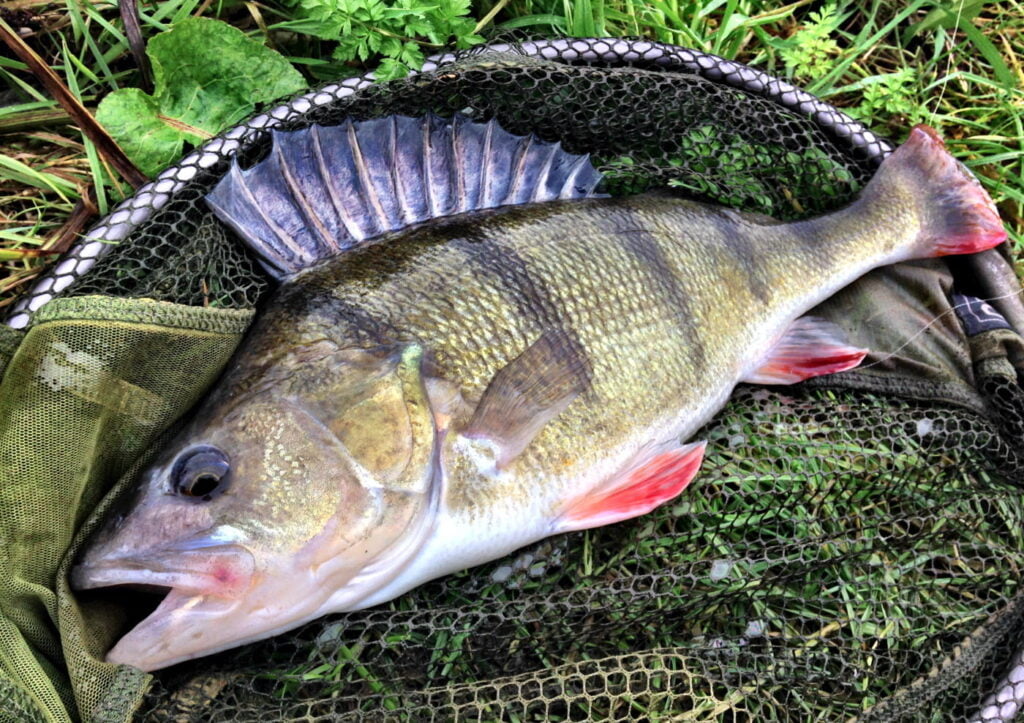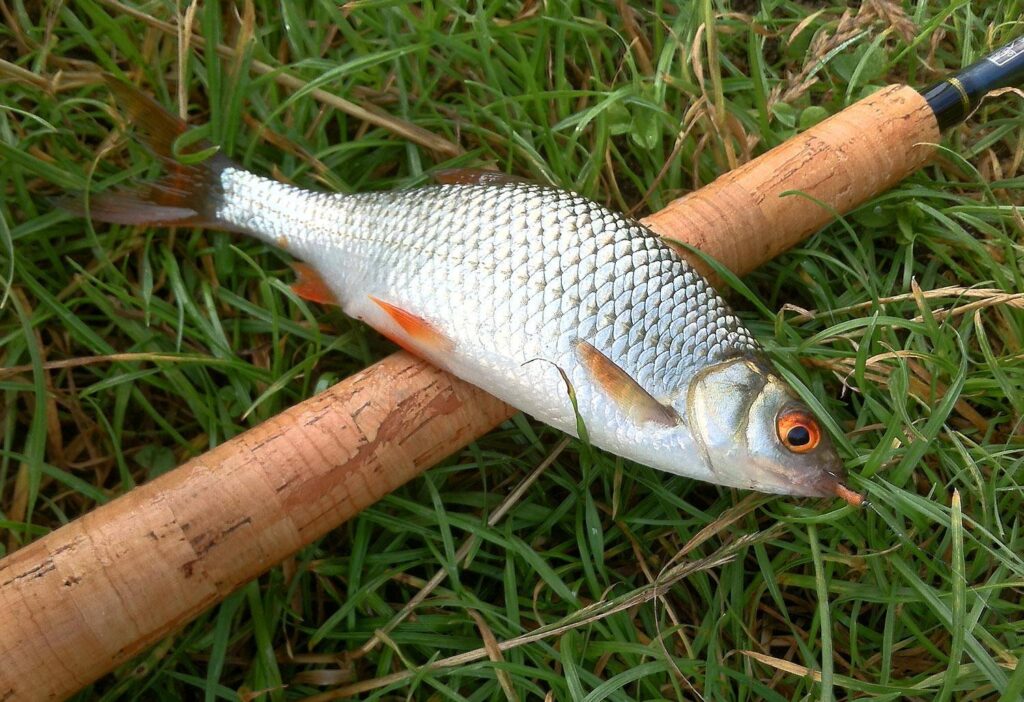Girdlefish is a medium-sized fish from the salmon family. Typical for groins feature is a large dorsal fin, which when bent reaches the adipose and sometimes the beginning of the caudal fin. Anglers compare the dorsal fin to a sail. The bream is one of the most popular fish for fly fishing for fishing. Let's take a closer look at this fish.
What does the groin look like?
What does a roach's body look like?
The girdle has an elongated, sleek and strong body that allows it to move in the water at high speed, even against a strong current. The body is covered with large scales that are firmly attached to the body. The glistening scales of the groin vary in color, some with a greenish or bluish tint. The back is dark gray with black spots on the sides.
The main distinguishing feature of the groin is the large dorsal fin. When folded, the dorsal fin reaches the tail fin. Anglers compare it to a sail, flag or fan due to its large size. The male can be distinguished from the female by the dorsal fin. The female osprey has a fin of the same height along its entire length or even slightly decreasing towards the tail. The dorsal fin of males increases closer to the rear tail. There are pink spots and vertical stripes of turquoise or purple on the dorsal fin of the groin.
Between the dorsal and caudal fins there is a small adipose fin, which proves the salmon origin of the girdle.
Anus and tail fins are red-burgundy. On the tail fin there are spots of various sizes, which have a pink color and dark stripes with a lilac or bluish tint. In general, European warblers are paler and less spotted than other species.
The warbler's head is rather narrow, with large bulging eyes. The mouth is small. There are teeth in the mouth - in the form of a brush.
What is the body color of a skunk?
The bream is deservedly considered one of the most beautiful freshwater fish living in our country. The color of the body gives the ability to survive in difficult conditions, carefully camouflaged from enemies.
The girdle has a monochrome, dark gray back with small, variously shaped, black spots scattered along it that extend to the dorsal fin. The color of the body combines a combination of stripes and spots from bright colors to very dark, almost black. These spots and bands can make the groin appear greenish, blue, brown, or purple. The sides are light silver, the belly is gray. Sometimes there are gray ones with a yellow belly.
The color of the girdle is determined not only by its genes and living conditions. Giraffes that live in large rivers are lighter in color, while those that live in small rivers are darker.
During the spawning period, the gray color becomes even brighter, young bream acquire the color of fry, with transverse dark stripes.
Girdle age and size
The maximum size of the groin depends on the species, the European groin is considered the largest, reaching up to 40-50 cm, some individuals up to 60 cm.
The growth rate of the sedge depends on the richness of the food base, water temperature, water saturation with oxygen.
The maximum life expectancy of a woodchuck is about 14-15 years, but in nature units reach this age.
Where does the gecko live?
The gizzard likes clean, fast, cool, oxygenated water. Lives in both lowlands and mountain rivers, but prefers the latter. Can be found in large streams. Thickets are also found in lakes, but quite rarely. The woodpecker can live in water bodies at an altitude of up to 2300 meters. Can live in salt water.
Kiršli's favorite rivers with a rough winding channel, many holes and rapids with a hard stony bottom.
The way of life of Kirschl
The grouper belongs to fish that live alone, even young groupers prefer to be alone rather than in groups. The reason for the loner's solitary lifestyle is that in this way he gets rid of competition for food.
The stingray actively feeds in the morning and evening, when there is no bright sun, but it is not too dark, at this time it will rise to the surface of the water in search of insects flying near the water. During the day, they stay in secluded places, in the depths, behind stones or rocks.
Most of the time, warblers stand behind some kind of shelter and carefully observe what is happening around them. As soon as any living creature appears in his field of vision: a larva or an insect that has fallen into the water, they become his prey.
Giraffes perform two seasonal migrations per year. In spring, during spring floods, it rises upstream to the river's headwaters and rises to its tributaries. This is where they spawn. Lake-dwelling herons move along the shore of the lake in the spring, looking for tributaries where they rise to spawn and feed.
In autumn, with the onset of cold weather, woodchucks go down the river, where they hibernate in holes. In winter, the grouse moves little, but continues to feed. During such seasonal migrations, woodpeckers do not cover long distances, they usually travel no more than a few tens of kilometers.
The bream is a very attentive and careful fish, it notices everything that happens on the surface of the water and on the shore. If you suspect danger, run away.
What does the buzzard eat?
The girdle can be called an omnivorous fish. The basis of its diet is various insects that live in water or beetles that accidentally fall into the water.
Giraffes are able to jump out of the water and grab an insect that comes close to the water. High speed and high maneuverability allow it to jump out of the water quickly and high to grab its prey.
A grouse can stand for hours behind its cover, next to a fast current, patiently waiting for the river itself to bring him something to eat.
In various sizes, both large and small, the smolts are happy to eat small crustaceans, worms and various larvae, picking them up from the bottom.
In the spring, during the spawning season, bream are happy to feast on the roe of other fish.
As his age and size increases, his diet changes. As adults, big sardines start hunting fry, preparing ambushes near underwater shelters.
How the gizzard spawns
Females can spawn at the age of two, and males at the age of three.
When the spawning season begins, the appearance of the male changes. The color of the male becomes especially bright, the large upper fin on the back increases. Scientists say that such a large dorsal fin of the male does not allow the current to quickly carry the milk away with its movements, which increases the efficiency of the egg fertilization process.
Spawning of bream begins when the water warms up to 8-11 degrees Celsius. Such a water temperature, as a rule, is at the end of April - May.
For spawning, the chub chooses shallow sections of the river, where the depth is from 30 to 70 cm. The spawning place should have a moderate current, sandy or stony bottom. The murres living in the lake either choose shallow places near the shore for spawning, or they go to spawn in small rivers and streams flowing into this lake.
Before laying the eggs, the female makes a nest, in the form of a hollow at the bottom, where she lays the eggs. The female lays from 3 to 35 thousand eggs, which sink to the bottom. Once the eggs are laid, the male fertilizes them and covers them with sand to protect them from being eaten by other fish. The diameter of the eggs is about 3 mm, they have a light yellow shade. After laying the eggs, the male and female leave the nest and return to their permanent habitats.
After 15-20 days, fry appear from the eggs. The fry develop very quickly, reaching a length of 10 cm at the end of the first year under good conditions.
The reproduction of bream is not very efficient, a considerable part of the eggs laid are eaten by other fish, a considerable part of the fish die from predators in the juvenile stage, only 2-3 out of 10 juveniles survive.

Kirshlys in cooking
Grouse meat is quite tasty and tender, with a pleasant smell, reminiscent of trout and salmon meat. The meat is not red, but light pink in color.
Giraffe meat is a valuable source of protein, low in fat, and has a balanced composition of vitamins and minerals. It has few bones and does not smell like mud.
Many unusual, original and delicious dishes can be prepared from kirsch. It can be boiled, baked, stewed, salted and baked.
Grouse meat has a delicate, distinctive taste and aroma, so it is not worth adding a lot of spices and seasonings to it when cooking.
